The “Assisi-Spoleto Olive Belt” is an Apennine piedmont landscape stretching for over 40 kilometers. It is a unique, unrepeatable heritage that involves six municipalities in the province of Perugia: Assisi, Spello, Foligno, Trevi, Campello sul Clitunno, and Spoleto.
The enormous and unmistakable presence of the cultivation of the olive tree (9,000 hectares of land and almost 1,500,000 plants) is the millenary result of a culture of a non-spontaneous nature. The olive tree in the “Assisi-Spoleto Olive Belt” (also called the “Spoleto Valley”) is an artificial, unnatural presence. The olive groves covering the slopes, the arrangement of the plants, the low walls, the species cultivated, the production system, and the traditional settlements show a landscape undergoing a constant evolution. Every change takes place thanks to man’s intervention with a constant respect of the balance of tradition and innovation.
The presence of the olive trees, down through the centuries, has had a considerable importance from the cultural, artistic, architectural, landscape, and hydrogeological standpoints. Today the “Assisi-Spoleto Olive Belt” is one of the principle olive-growing areas of the Umbria region.












